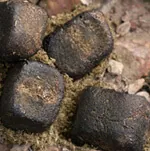Answers to your wombat FAQs
Here are answers to your wombat FAQs
+ Where does the name wombat come from?
The word Wombat comes from Darug, the aboriginal language of the Sydney Basin.
+ Are wombats aggressive or dangerous?
Wombats can become quite aggressive to intruders or if cornered. Wombats can defend themselves vigorously. Apart from placing their cartilage rich firm butts to the outside of a burrow to stop would be attackers, wombats are well suited to defend themselves. Whilst their thick butts prevent predators from grabbing them with their teeth, they can inflict severe puncture wounds from their claws and deep bites. They can also run at up to 40km/h, making them as fast as Olympic sprinters for short distances. Moreover, this allows them to charge at and bowl over human beings due to their speed and short stocky build.
+ Are wombats cuddly and friendly?
Whilst they are still babies, wombats are indeed quite cute and cuddly. However, as they grow they become less so and have the tools to cause serious harm to humans. Whilst not so cute and cuddly, they tend to tolerate humans as long as they pose no threat. Moreover, they can bite through 2cm of boot.
+ What do you call a group of wombats?
A group of wombats is called a wisdom, a mob or a colony of wombats.
+ What does wombat poop look like?
Wombat poop is cuboid. Wombats buttholes are round. So whilst you can’t put a square peg in a round hole, wombats manage to force out cuboid poop through a round hole.

This has to do with the long digestion cycle taking 12 – 18 days for the wombat to digest the grass completely. Moreover, scientists found the scat solidified in the last eight per cent of the intestine. They also observed the organ stretching unevenly, producing the unique cuboid shape at the end of the digestive tract.
+ How long do wombats live?
Wombats live for up to 15 years in the wild and up to 30 years in captivity.
+ What types of wombats are there?
The common wombat is found in Tasmania, New South Wales, Victoria, and South Australia. The northern hairy-nosed wombat is found only in the Deniliquin area in southern NSW, the Moonie River area in southern Queensland, and Epping Forest National Park in central Queensland. The southern hairy-nosed wombat is found only in a small region of the southern central coastline of Australia.
+ Why does a wombat’s pouch open backwards?
A wombat’s pouch open backwards so that they do not get dirt on it when digging. They are the largest digging mammal. The koala, tasmanian devil and bandicoot also have backward opening pouch.
+ What day is World Wombat Day?
World Wombat Day is celebrated on 22nd of October.
+ What animals eat wombats?
While wombats don’t have many natural predators, they’re eaten by foxes, dingoes, wild-dogs, eagles, and Tasmanian Devils. Furthermore, they are also often hit and killed by cars.
+ What is a baby wombat called?
Baby wombats (just like other marsupials) are called joeys.
+ What are wombats closest relatives?
The closest relative to the wombat is the koala. The next closest is the kangaroo. The koala and wombat are both descendants of the diprotodon, a 4 metre goliath that roamed Australia 40,000 years ago.
+ How long does a wombat stay in its mother’s pouch?
Like a kangaroo, wombats usually give birth to a single joey, which is blind and hairless, weighs about 2 grams and is the size of a jelly bean. It crawls into its mother’s pouch and attaches to one of her two teats. In the case of a wombat joey, the lips fuse on to the teat to prevent the joey from falling out of the pouch. The joey stays in the pouch for 8 to 9 months.
+ How can I see a wombat in the wild from Sydney?
Travel Ideology Sydney Tours provides full day private tours to see wild wombats roaming freely in the native habitat. You will also see wild kangaroos in this tour.
See Wild wombats Sydney tour
